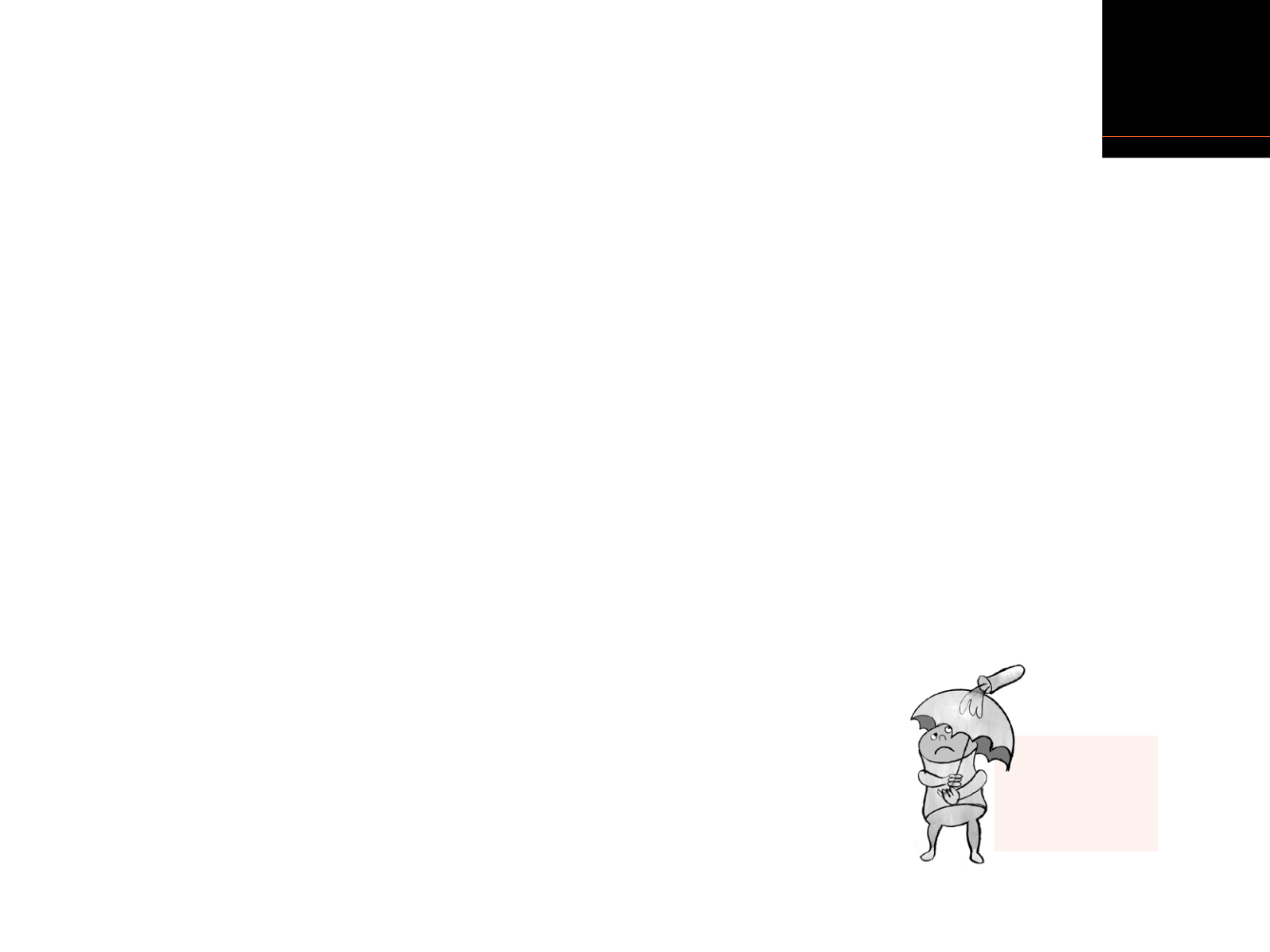
explain
pain
2
section
31
page
I’m a mechanical
sensor. I don’t
do acid man!
‘
’
Vital sensor information
1.
Most sensors are in your brain. These sensors are
specially suited to chemical activation. All sorts of
thoughts canmake alarm bells in the brain ring, just
as nettles and other stimuli canmake the alarm bells
in the peripheral nerves ring. Let’s start with the
sensors in the nerves from your skin, muscles and
bones.
2.
When you look at neurones under themicroscope,
there is a lot of action at the sensors. We have drawn
amechanical (M), a temperature (T) and a chemical
(C) sensor. Amechanical sensor can be opened or
shut by particular chemicals. For example, if you go
to the dentist and have a needle, the chemicals in the
injected drug close the sensors so they can’t detect
mechanical stimuli. Thismeans that no impulses go
to the spinal cord and onto the brain. Other drugs
and chemicals can keep the sensors open. For
example, the sting of a sting ray, regarded by anyone
who has been stung as themost painful thing they
have experienced, works by locking sensors open.
3.
The life of a sensor is short – they only live for a few
days and then they are replaced by fresh sensors.
67
Thismeans that your sensitivity is continually
changing. Remember this point. If you are a pain
sufferer, it may give you fresh hope. Your current
level of sensitivity is not fixed.
4.
Sensors aremade inside your neurones under the
direction of the DNA – the greatest recipe book of all.
There are all sorts of recipes in the DNA – including
those formany different kinds of sensors. The
particular sensormade by a particular neurone
depends onwhich recipes are activated. The recipes
activated depend on your individual survival and
comfort needs at the time. The sensormix is
normally relatively stable but can change quickly. If
your brain decides that increased sensitivity is best
for your survival, the DNA can increase the
manufacture of more sensors which open to stress
chemicals such as adrenaline.
5.
Similarly, the rate at which sensors aremade is
normally relatively stable but can change quickly.
A change in the rate of sensor production increases
or decreases the sensitivity of that neurone to a
particular stimulus. If you have persistent pain, you
should take hope from this because the
rate of sensormanufacture can
be reduced if the demands for
production are reduced.


